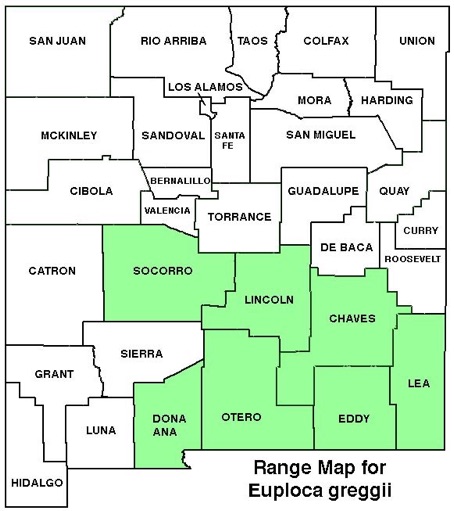WILDFLOWERS OF NEW MEXICO

Spreading by rhizomes with low and sprawling, branching, leafy stems to 12 inches tall, this rhizomatous plant can form groundcover colonies in arid areas and drainages that collect periodic run-off water. Note the narrow, linear, hairy leaves and 1/2 inch wide, funnel-shaped flowers with pleated, white petals and a yellow throat.
FLOWER: April–September. Loose clusters of 5–10 flowers on branch tips have 5 shallow, rounded, united lobes and a yellow throat. Fruit a densely hairy capsule with 4 nutlets.
LEAVES: Alternate. Blades narrow, linear, to 1 1/4 inches long (30 mm) with a prominent midrib; edges moderately rolled under, surfaces with tiny, stiff, flat-lying hairs.
HABITAT: Sandy, gravelly, gypsum soils with water periodically collects; washes, flats, ditches, roadsides; desert scrub and grasslands plains, foothills.
ELEVATION: 3,000–4,400 feet.
RANGE: NM, TX.
SIMILAR SPECIES: Phlox heliotrope, E. convolvulacea, widespread across NM, has lance-shaped to elliptic leaves, and is annual without rhizomes.
NM COUNTIES: Southern half of NM in low-elevation, seasonally wet habitats: Chaves, Dona Ana, Eddy, Lea, Lincoln, Otero, Socorro.
NOTES: In Flora Neomexicana III (2020), Allred separates species within Heliotropium with hairs into the genus Euploca. Older publications, and much current literature, does not segregate Euploca. Yet some recognize the new family Heliotropiceae while others maintain the family Boraginaceae.

FRAGRANT HELIOTROPE
EUPLOCA GREGGII (aka Heliotropium greggii)
Heliotrope Family, Heliotropiaceae (formerly in Borage Family, Boraginaceae)
Perennial herb



THE CONTENTS OF THIS WEBSITE ARE COPYRIGHTED AND CANNOT BE USED
WITHOUT PERMISSION OF GEORGE OXFORD MILLER
EMAIL ME
Foliage is covered with small, stuff, flat-lying hairs.


The stem elongates as the fruit ripen into hairy capsules.

The plant spreads by rhizomes and can form a dense groundcover in seasonally wet areas.
